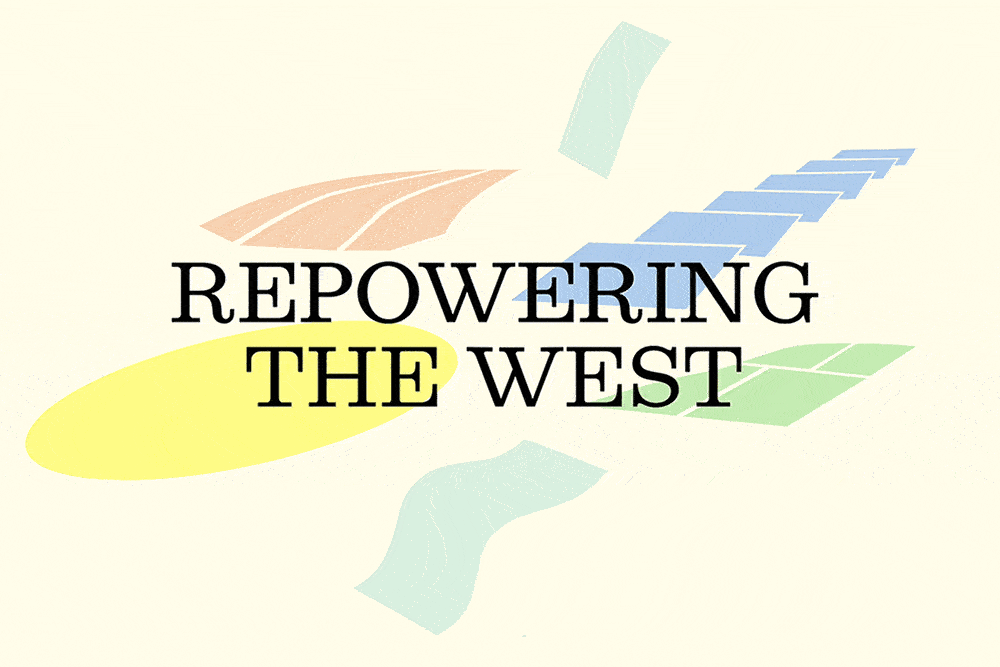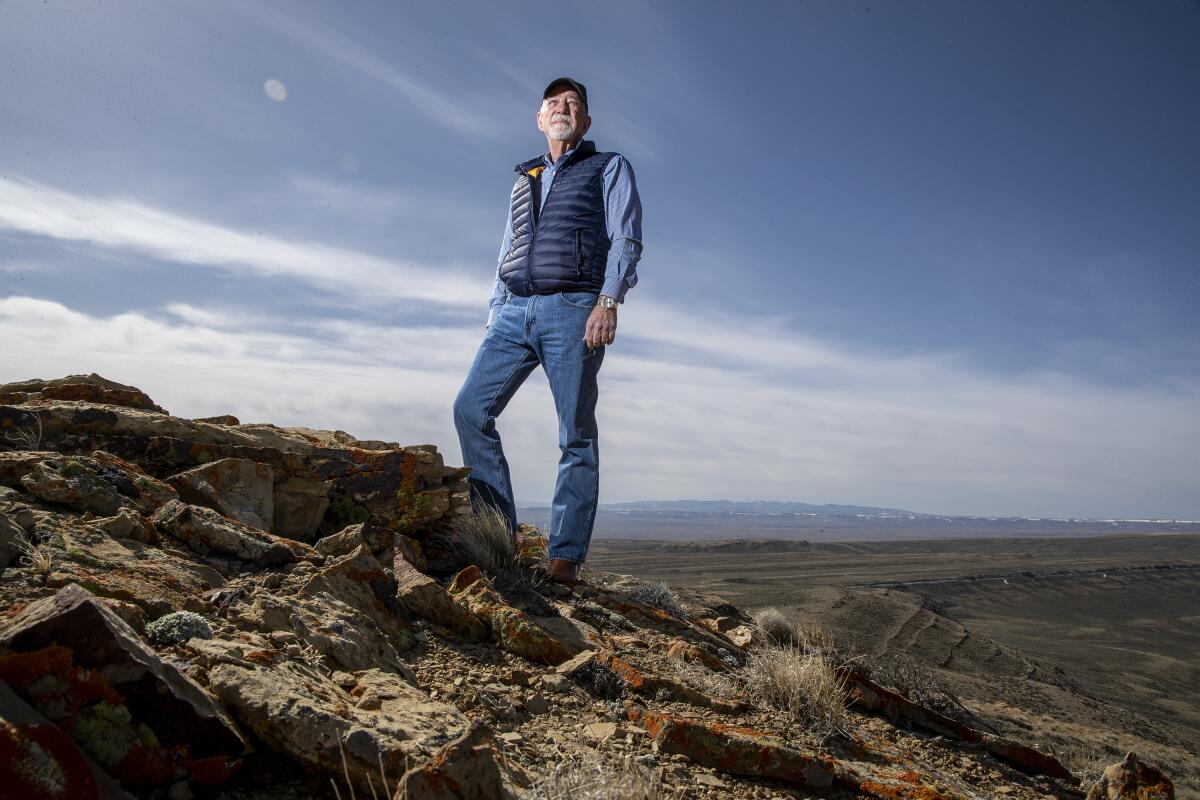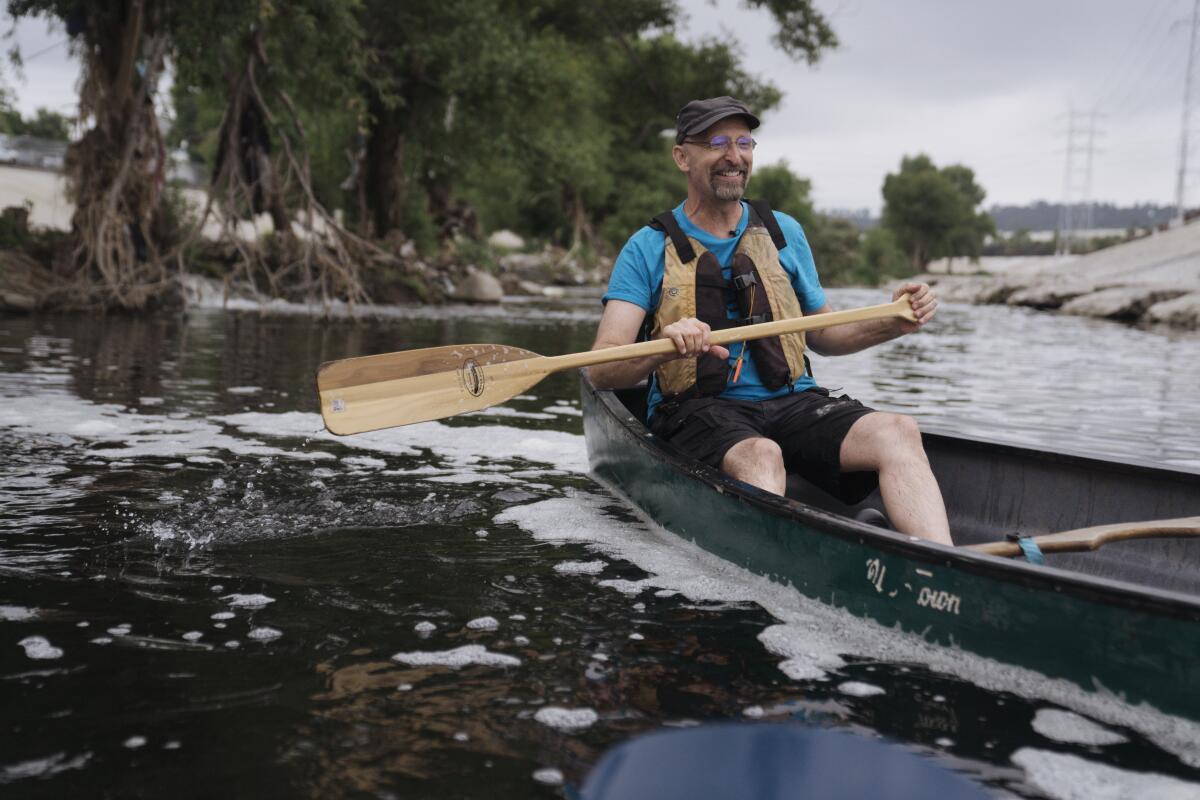Boiling Point: Solar sprawl, Vegas-style

- Share via
This story was originally published in Boiling Point, a newsletter about climate change and the environment. Sign up here to get it in your inbox.
Hello from California’s Central Coast, where I’m writing today’s edition of Boiling Point from a coffee shop in San Luis Obispo.
By the time you read this, I’ll have taken a tour of the Diablo Canyon nuclear power plant, which I’m excited to tell you about in the next few weeks. As you may recall from my earlier coverage, it’s looking increasingly likely the coastal plant will be kept in operation past its previously scheduled shutdown date of 2025, largely thanks to Gov. Gavin Newsom, who says the reactors are still needed to keep the lights on across California. Nuclear critics disagree, describing Diablo as dangerous and unnecessary.
More to come on that front.
I’ve also got a big story out today that I hope you’ll read. It’s Part 3 of our Repowering the West series, and it’s about the intense solar sprawl envisioned by energy companies for the desert surrounding Las Vegas. Is it a good idea to put all those solar panels on undisturbed public lands, where they can disrupt wildlife habitat? Or would we be better off putting them on rooftops?
I’ll have more on those questions in this Thursday’s Boiling Point newsletter. For now, I hope you’ll read the Nevada story, and check out this rad video by my colleagues Jessica Q. Chen and Maggie Beidelman showing some of what we saw in our travels.
Here’s what else is happening around the West:
TOP STORIES

New research finds that cooking with gas can lead to dangerous levels of benzene, a cancer-causing chemical, in your home — in some cases worse than breathing secondhand cigarette smoke. Here’s the story from my colleague Tony Briscoe, describing the study from Stanford University and the nonprofit PSE Healthy Energy. This will only fan the flames — so to speak — of the natural gas culture war, which saw congressional Republicans vote this month to pass a bill called the Gas Stove Protection and Freedom Act, as The Times’ Owen Tucker-Smith reports. If you’re worried about breathing polluted air from gas appliances in your home, Canary Media’s Alison F. Takemura explains how you can take advantage of federal incentives for heat pumps and more. And if you can’t afford to go electric? My best advice is to ventilate as best you can. This story by the New York Times’ Emily Anthes is a fascinating history of how the U.S. once did a great job ventilating buildings for health reasons — but no longer.
On a fundraising trip to California, President Biden visited a San Francisco Bay Area nature preserve and announced $600 million in climate funding from the Inflation Reduction Act. The money will help coastal and Great Lakes communities respond to storm surges, sea level rise and flooding, Taryn Luna reports. California, meanwhile, has launched a $20-million fund to lower the risk of conducting prescribed burns, which can help prevent larger and more destructive fires but can also create financial liability for the people who set them if they get out of control (which happens rarely). Details here from my colleague Alex Wigglesworth. In related news, KQED’s Danielle Venton reports that California officials want to make sure that new federal air pollution standards don’t made it harder to conduct prescribed burns — which can help keep air quality from getting much, much worse.
The Supreme Court dealt a blow to the Navajo Nation’s efforts to secure clean drinking water for all of its citizens, ruling 5-4 for the federal government and the state of Arizona in a lawsuit over Colorado River rights. The justices threw out a lower court ruling in favor of the Navajo Nation, which had found that an 1868 treaty “came with an implied promise that they would have access to water,” The Times’ David G. Savage writes. The Arizona Republic’s Stacey Barchenger, meanwhile, reports that Gov. Katie Hobbs signed a bill to restore water service to the Rio Verde Foothills, the travails of which have drawn all sorts of media attention this year. “Every single citizen within our state should have access to clean drinking water,” said state Sen. Justine Wadsack, the bill’s sponsor. Unfortunately, that logic doesn’t yet seem to apply to the Navajo Nation and other tribes. In fact, a startling new investigation from High Country News and ProPublica finds that Arizona has used Colorado River negotiations to extract political concessions from tribal nations — and has kept tribes from accessing their water while negotiations drag on.
POLITICAL CLIMATE
Oregon’s Multnomah County, home to Portland, is suing 17 fossil fuel companies and interest groups, seeking $50 million in damages for a deadly 2021 heat wave and $1.5 billion for future climate damages. It’s one of the first lawsuits going after coal, oil and gas companies for a specific climate disaster, the Guardian’s Dharna Noor reports. I’d be stunned if we didn’t see more such lawsuits as the climate crisis gets worse. Just look at Texas, where temperatures were so high last week that the state risked running out of electricity as air-conditioning demand skyrocketed. Despite the dangers of extreme heat, Texas just passed a law blocking cities from requiring water and shade breaks for construction workers, Stateline’s Barbara Barrett reports.
Gov. Gavin Newsom’s push for permitting reform — to speed up construction of clean energy, water and transportation infrastructure — is facing intense pushback from opponents of Newsom’s Delta tunnel project. CalMatters’ Rachel Becker has the latest on the political showdown over the tunnel, which would replumb California’s water delivery system in a way that supporters say would help bulwark the state against climate change but critics say would help Los Angeles and the San Joaquin Valley suck up more water from northern rivers. L.A. Times columnist George Skelton is skeptical, writing that if Newsom wants permitting reform, including the Delta tunnel was a pretty lousy idea. On the bright side, we have a lot more water than we did this time last year, as you can see in these wild before-and-after images of California’s largest reservoirs, Shasta and Oroville.
“We don’t want the environmentalists to see what we’re really up to.” I’m not sure what inspired a Sacramento lobbyist for the oil and gas industry to say that to a reporter, but it’s just one part of his remarkably frank conversation with Aaron Cantú at Capital & Main, discussing a bill dealing with carbon capture and storage. Elsewhere in the statehouse, several bills are inching forward that would address interconnection delays — technical snafus that have slowed not only large solar and wind farms but also electrical-panel upgrades and home construction. Details here from Emma Foehringer Merchant at Inside Climate News.
THE ENERGY TRANSITION

Construction began last week on the 732-mile TransWest Express power line, which will carry gob-smacking amounts of wind energy from Wyoming to California. U.S. Energy Secretary Jennifer M. Granholm and Interior Secretary Deb Haaland attended the groundbreaking, per this story by the Associated Press’ Mead Gruver. If TransWest Express sounds familiar to you, it may be because you remember Part 1 of Repowering the West, in which I traveled the route of the proposed transmission line and wrote about why it’s so hard to build renewable energy infrastructure in the United States. TransWest Express is backed by billionaire Phil Anschutz, who still doesn’t have a customer for all the wind energy he’s planning to generate in Wyoming.
Supervisors in California’s Shasta County voted twice to block a proposed wind farm — but now state officials may approve the wind farm themselves, under a new law taking control of some energy permitting decisions away from local governments. Details here from Jefferson Public Radio’s Jane Vaughan. Farther north, Oregon’s governor, U.S. senators and two other members of Congress — all Democrats — are calling for the Biden administration to pause offshore wind energy development, to do more study of possible harm to fishing and the environment. George Plaven has the story for Capital Press.
The California desert is home to the Western Hemisphere’s only rare-earth mine — and it’s ramping up production and processing to supply metals for electric vehicle motors and wind turbines. Here’s Maddie Stone’s fascinating story for Grist, which explores the environmentally scandalous history of the Mountain Pass mine and what the owners are doing today to try to become a pioneer in rare-earth recycling. In Nevada, meanwhile, NASA is working to block lithium mining on a ridiculously flat stretch of desert that the space agency uses to calibrate satellites. It’s one of the more unusual examples of opposition to lithium mining I’ve seen, and it’s gotten a member of Congress all worked up, Scott Sonner reports for the Associated Press. And in yet another example of tensions created by clean energy-related mining, Native American activists are fighting a proposed copper mine on federal lands in Arizona, saying it would destroy an area they hold sacred, The Times’ Kevin Rector reports.
AROUND THE WEST

“When it comes to restoring the L.A. River, there’s been a lot of posturing, and not much to show for it.” You’ve most likely never seen the Los Angeles River like it’s presented in this story by my colleague Louis Sahagún, with video by Jackeline Luna and Maggie Beidelman. They kayaked the much-abused but still beautiful river with adventurous activists who see the waterway as a wonderful recreational asset, and who are urging government agencies to hurry up with long-promised restoration projects. In other Southwestern river news, the San Diego Union-Tribune’s Joshua Emerson Smith reports that much of the $300 million set aside by Congress to double the size of a sewage treatment plant along the Tijuana River — and protect San Diego-area beaches from rampant water pollution — will need to go toward fixing the current treatment plant, which is in terrible shape.
“With State Farm unwilling to talk with the media and open its books, it’s difficult to separate industry spin from financial — and fire — reality.” That’s from this illuminating story by The Times’ Sam Dean, questioning whether one of America’s largest insurance company was actually spooked out of California by rising climate and wildfire risks, or if its decision to stop selling new home insurance policies was actually a tactic to put pressure on state officials to allow the company to raise rates. Regardless of what’s really going on, Times columnists Erika D. Smith and Anita Chabria see State Farm’s decision as a reminder that California shouldn’t keep building housing in high-risk places, whether the risk is fire, flood or other climate-fueled disasters. State officials are “ignoring the obvious, knowing the consequences of doing so will be catastrophic,” Smith and Chabria write.
Saving the next P-22 starts with a million “hyperlocal” seeds and a bare-bones nursery. My colleague Jeanette Marantos has a wonderful story on the people growing the plants that will simulate natural habitat on the wildlife crossing being built over the 101 Freeway outside Los Angeles to help animals move around safely and hopefully not end up like the beloved, deceased cougar known as P-22. A similar crossing over another stretch of highway has been proposed in Northern California, with mountain lions, deer, bobcats and other creatures in mind, The Times’ Vanessa Arredondo writes. In an unfortunate reminder of why these things are needed, two bears were killed crossing highways outside L.A. last week, including one cub, Nathan Solis reports.
ONE MORE THING
I spent the weekend in the San Luis Obispo area, so of course I picked up a copy of the Tribune newspaper.
In keeping with my theory that energy stories are everywhere, the paper had a brief piece about a “bright flash” seen in satellite images of San Luis Obispo County. The piece explained that the flash was actually sunlight glinting off a solar farm — the Topaz solar farm, one of the nation’s largest. It’s operated by Warren Buffett’s Berkshire Hathaway Energy, which also happens to own the Nevada utility company at the heart of Repowering the West, Part 3 — published today, as mentioned earlier.
We’ll be back in your inbox Thursday. To view this newsletter in your Web browser, click here. And for more climate and environment news, follow @Sammy_Roth on Twitter.
Toward a more sustainable California
Get Boiling Point, our newsletter exploring climate change, energy and the environment, and become part of the conversation — and the solution.
You may occasionally receive promotional content from the Los Angeles Times.




